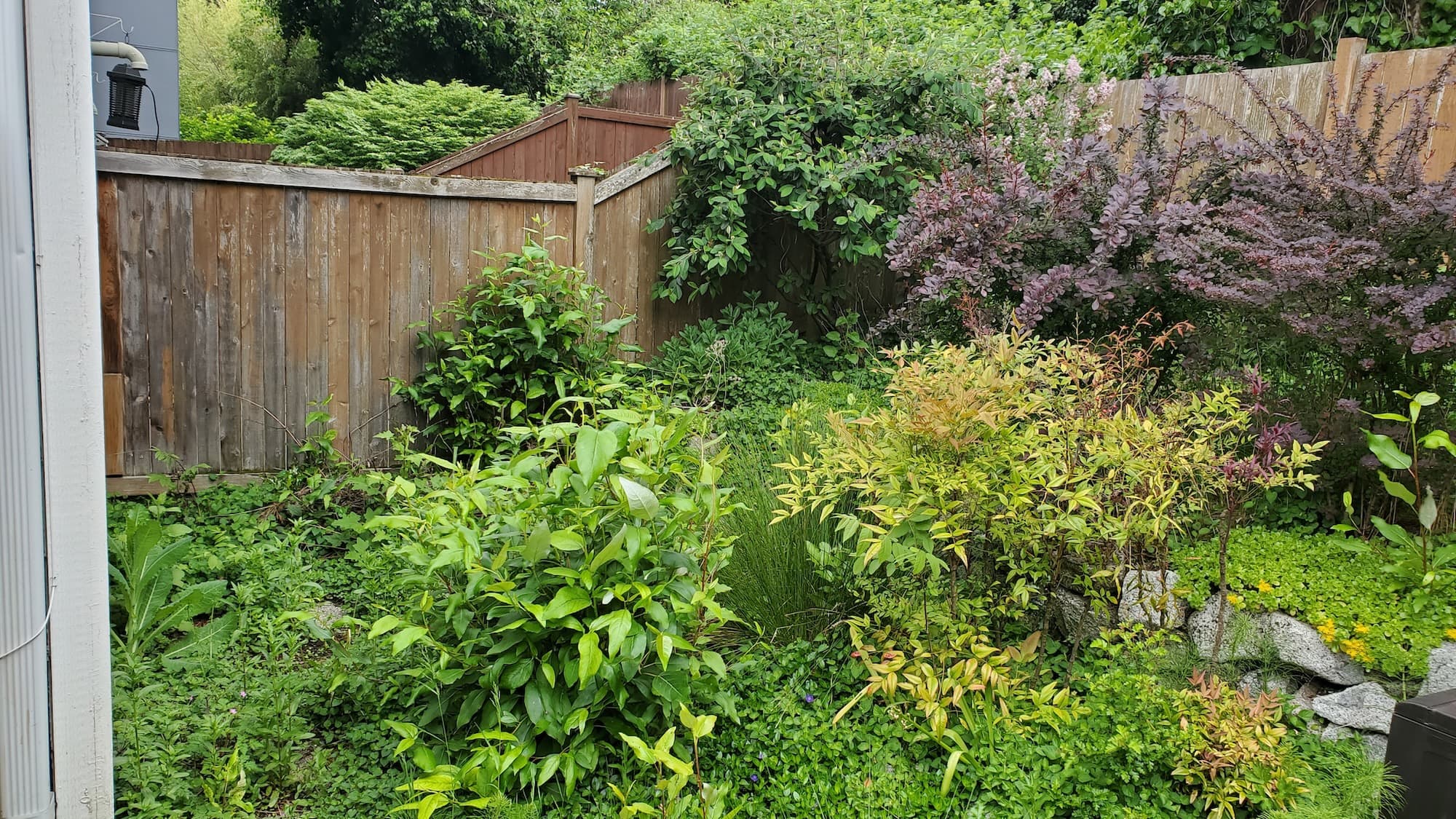Burien Wild grapevine removal
Homeowner’s Issue
Wild grapevines are common on Burien properties, especially along fences, slopes, and older hedgerows. Our wet, cool winters and mild summers let vines root easily in compacted or clay‑rich soils, where they can smother ornamentals, climb trees, and add weight to fences. Properties near Seahurst Park, Des Moines, or older lots in the Highlands often see regrowth from seed or underground roots.
Landlords and homeowners face recurring problems: shaded beds turn mossy as vines reduce light, slopes get unstable when roots pull at soil, and dense mats conceal trip hazards. Tenants want safe, tidy yards; owners want low‑maintenance results that hold between visits. The good news is that with mechanical removal, targeted root work, and sustainable follow‑ups — not herbicides — you can restore sightlines, reduce moisture‑related decay, and make future upkeep far easier. This guide focuses on practical, eco‑friendly steps you can expect from a local crew that understands Burien microclimates.
Our Quality Service
We remove wild grapevines using hand tools, pruners, and selective cutting to protect trees and hardscapes. We follow with root pruning and composting options to reduce regrowth and improve soil health. Every step is chosen for safety on slopes and wet ground common in Burien yards.
Benefits include improved curb appeal, reduced hazards, lower ongoing maintenance, and stronger fences and trees after removal. Our methods favor long‑lasting results and safer access for tenants or residents.
What’s Included
- Onsite assessment and written estimate.
- Cutting vines from structures, stakes, and trees.
- Root collar removal where practical to limit resprout.
- Hand‑pulling and small root excavation on slopes.
- Debris cleanup and disposal (haul‑away or Green Bin).
- Simple follow‑up plan to prevent regrowth.
Optional upgrades:
- Mulch + landscape fabric for beds.
- Organic, non‑chemical weed suppression (manual and mulch‑based).
- Native replacement plantings to occupy cleared space.
- Gravel or improved drainage where vines caused pooling.
Before & After / Expectations
After removal, newly exposed soil may show roots and bare spots; expect some regrowth from leftover roots or seeds in the first 6–12 months. Water new plantings lightly, keep mulch at 2–3” depth, and inspect for suckers every 4–6 weeks. For moss and shade issues, thin nearby canopy to increase light and reduce moisture that favors vine returns. Ivy and grape regrowth respond best to prompt hand removal rather than chemical sprays.
FAQs
- How long will this take? Small yards often take a few hours; larger or slope jobs may take a full day. We’ll outline time in the estimate.
- Will vines harm trees? Vines can strangle branches; we cut away vine loads and preserve the tree bark when possible.
- Do you use herbicides? No — we use mechanical and organic methods only.
- What do you do with the debris? You can choose haul‑away or Green Bin/compost disposal depending on volume.
Call to Action
If you’re a Burien homeowner or landlord ready to clear troublesome grapevines, book a free estimate. We schedule quickly, work with Burien site conditions, and focus on sustainable, dependable results. Email neatandtidyseattle@gmail.com to get started.










